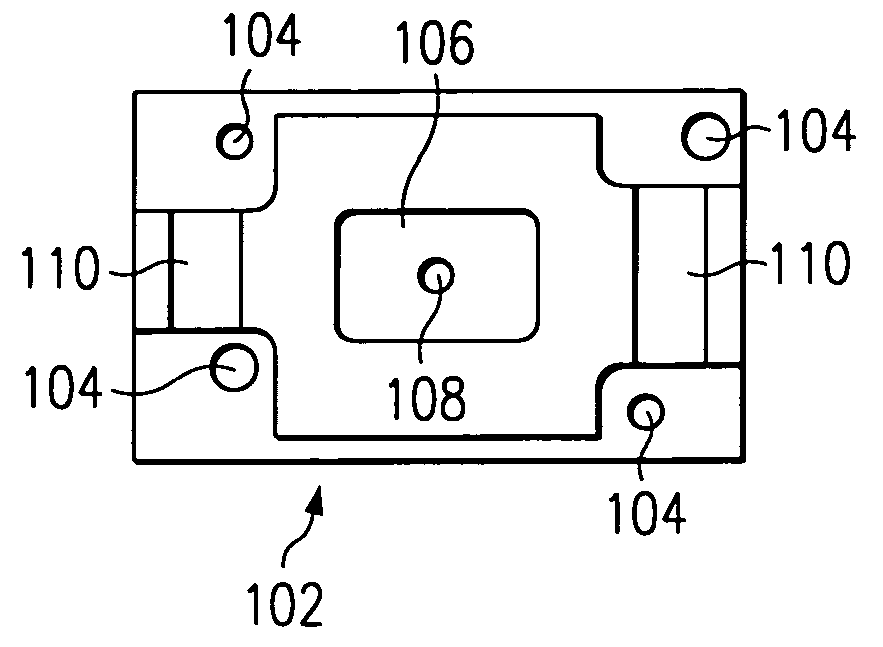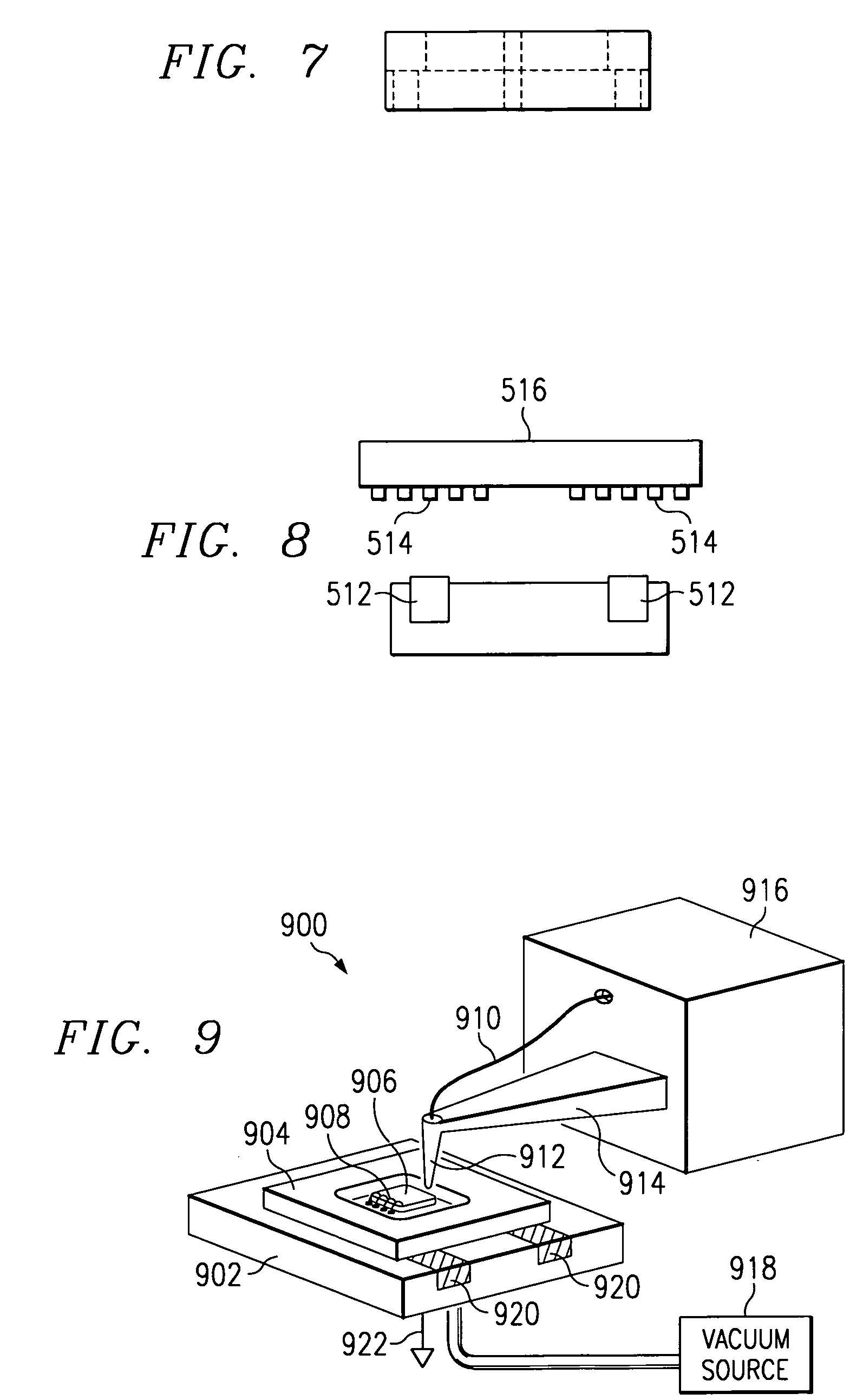Compliant wirebond pedestal
a wirebond pedestal and wire bond technology, applied in the field of semiconductor packaging, can solve the problems of low contrast ratio, unsuitable for most image display applications, and other types of products have not yet been commercially viable, so as to reduce the time and operation intervention of tool set-up, avoid the introduction of debris, and ensure the effect of reliable ground
- Summary
- Abstract
- Description
- Claims
- Application Information
AI Technical Summary
Benefits of technology
Problems solved by technology
Method used
Image
Examples
Embodiment Construction
[0026] A new holding mechanism has been developed that establishes a firm attachment between a package being bonded and the wirebond machine. The mechanism relies on a conductive resilient material to make electrical contact with ground stations on the package. The resilient material is ideally coupled with a rigid pedestal to hold the resilient material and prevent excessive deformation of the resilient material or movement of the package being bonded. A vacuum cavity and port is typically provided in the pedestal to allow a vacuum to hold the device against the resilient material and pedestal.
[0027]FIG. 9 is a schematic view of a wire bonder 900 using the pedestal 902 provided by the present invention. A package 904 placed on the pedestal 902 contains an electrical device 906. The bond pads on the electrical device 906 are electrically connected to bond pads on the package 904 by a series of bond wires 908. Each bond wire 908 is attached to the bond pads through a process well kn...
PUM
| Property | Measurement | Unit |
|---|---|---|
| conductive | aaaaa | aaaaa |
| conductive resilient | aaaaa | aaaaa |
| surface tension | aaaaa | aaaaa |
Abstract
Description
Claims
Application Information
 Login to View More
Login to View More - R&D
- Intellectual Property
- Life Sciences
- Materials
- Tech Scout
- Unparalleled Data Quality
- Higher Quality Content
- 60% Fewer Hallucinations
Browse by: Latest US Patents, China's latest patents, Technical Efficacy Thesaurus, Application Domain, Technology Topic, Popular Technical Reports.
© 2025 PatSnap. All rights reserved.Legal|Privacy policy|Modern Slavery Act Transparency Statement|Sitemap|About US| Contact US: help@patsnap.com



